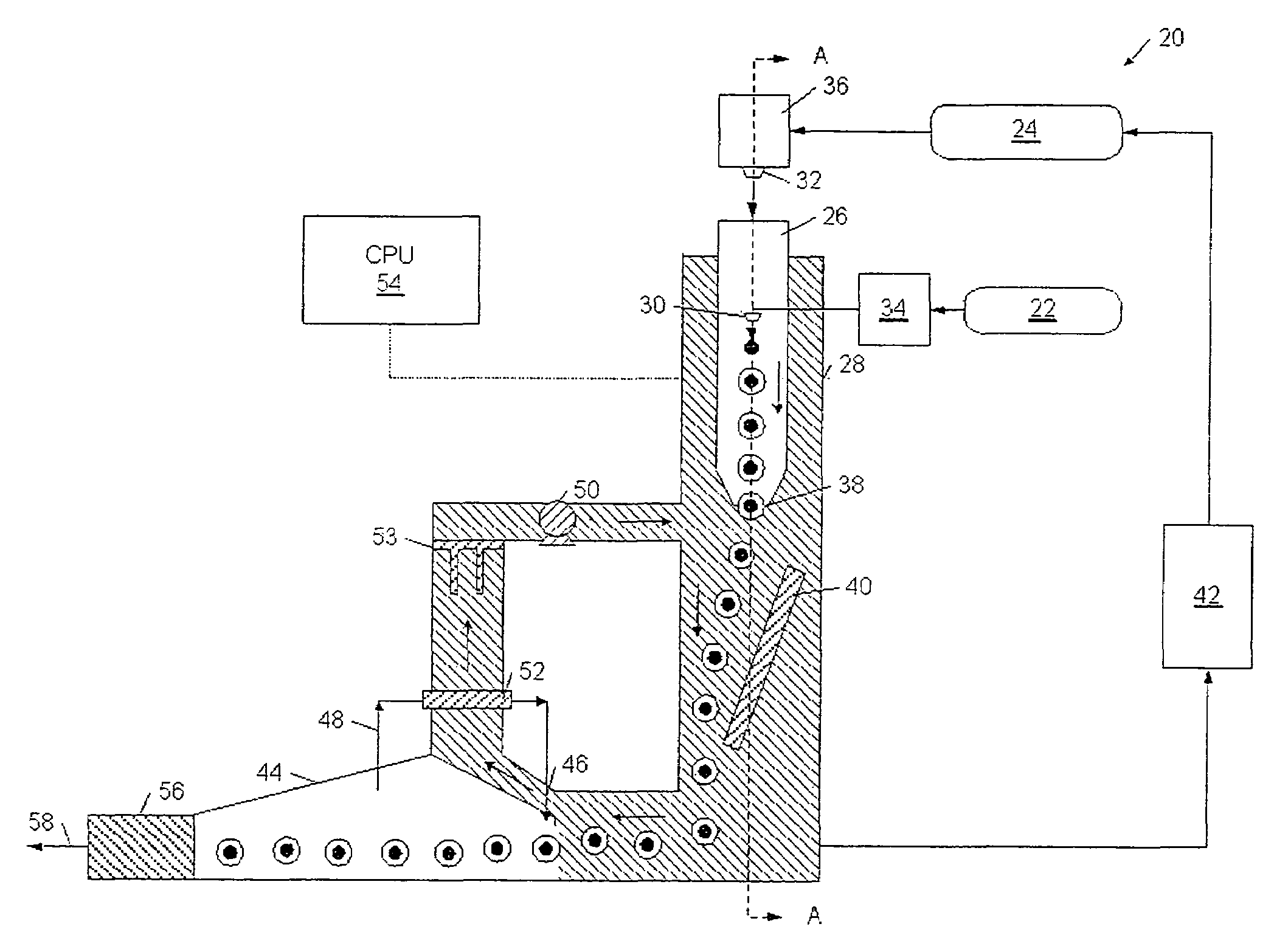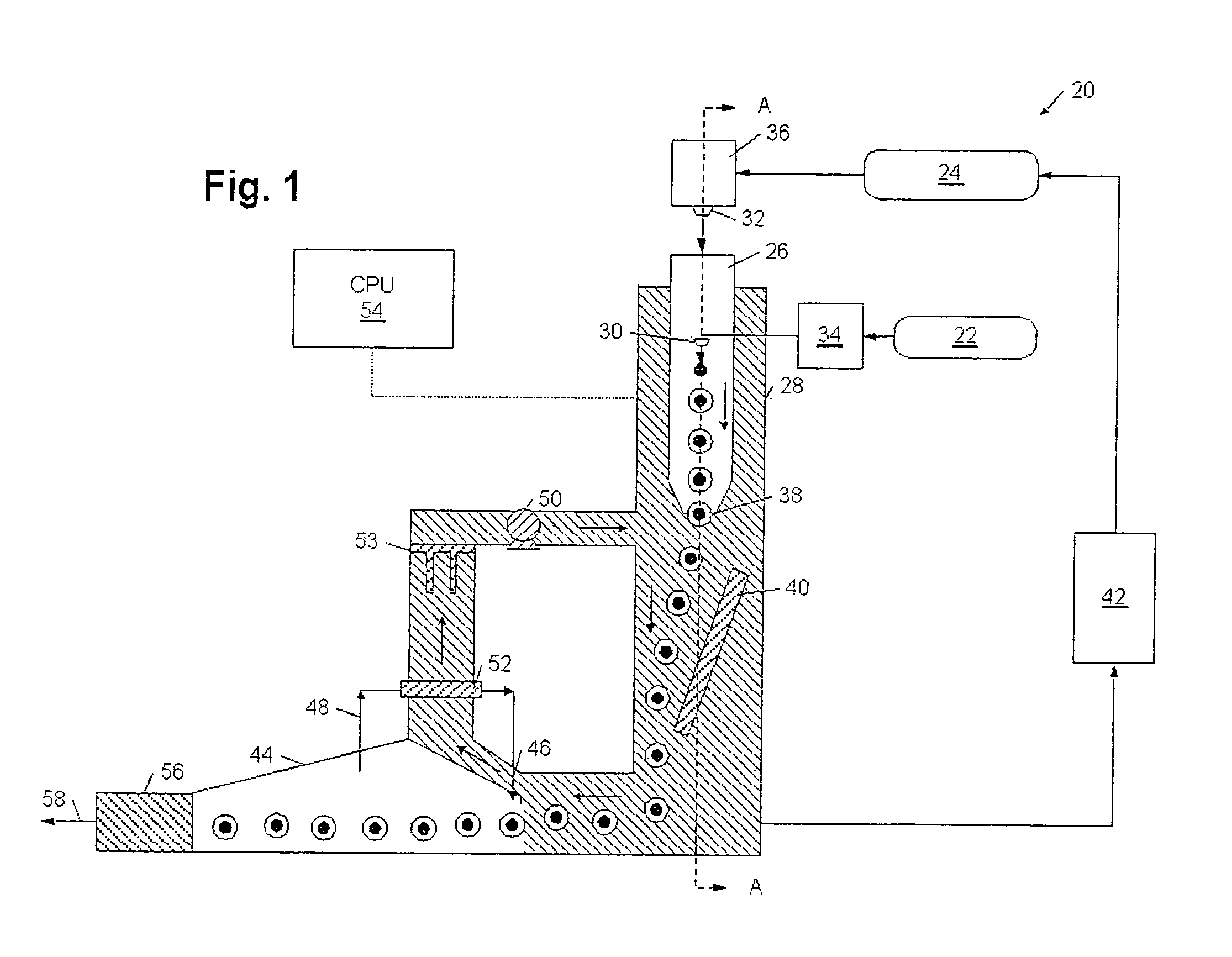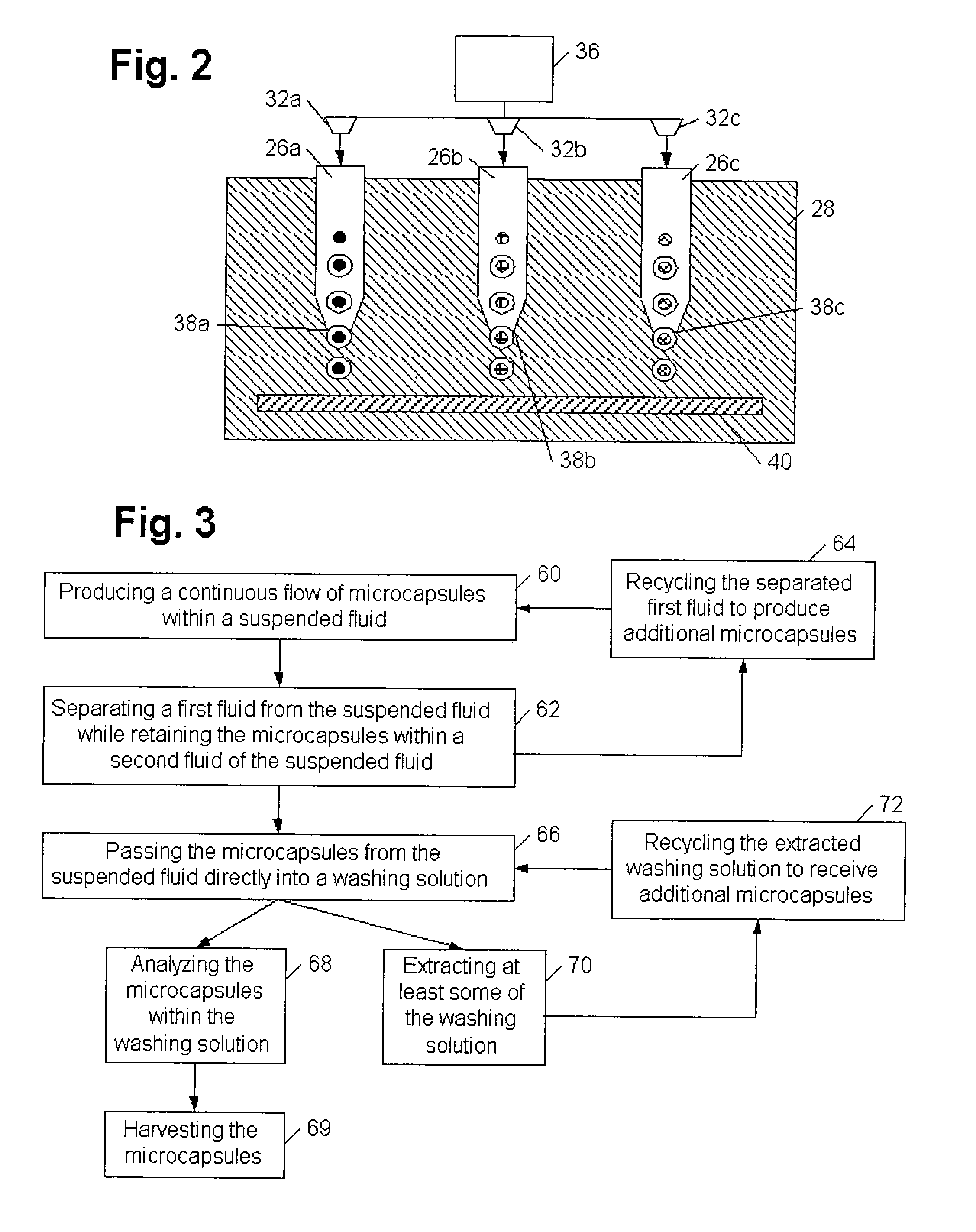Microencapsulation system and method
a microencapsulation and micro-capsule technology, applied in the field of microencapsulation, can solve the problems of inability to accurately identify and count microparticles suspended in fluids, adverse environmental problems, and/or difficult to assay, and achieve the effect of increasing production costs and accurately identifying and counting microparticles
- Summary
- Abstract
- Description
- Claims
- Application Information
AI Technical Summary
Benefits of technology
Problems solved by technology
Method used
Image
Examples
Embodiment Construction
[0027]Turning now to the drawings, exemplary embodiments of a system and a method for encapsulating microparticles are shown in FIGS. 1–3. In particular, FIG. 1 illustrates a schematic view of microencapsulation system 20 and FIG. 3 illustrates a flowchart outlining a method for producing microcapsules using such a system. FIG. 2 illustrates a partial cross-sectional view of microencapsulation system 20 taken along line AA of FIG. 1. In general, microencapsulation system 20 may be adapted to encapsulate liquid and / or solid particles and process the microcapsules in a single continuous system. More specifically, microencapsulation system 20 may be adapted to produce, cure, wash and analyze a continuous flow of microcapsules without disrupting the production flow of the microcapsules. In some embodiments, microencapsulation system 20 may include additional mechanisms with which to process microcapsules. Such mechanisms may be those known for use in the industry of microencapsulation a...
PUM
| Property | Measurement | Unit |
|---|---|---|
| diameters | aaaaa | aaaaa |
| diameter | aaaaa | aaaaa |
| volume ratio | aaaaa | aaaaa |
Abstract
Description
Claims
Application Information
 Login to View More
Login to View More - R&D
- Intellectual Property
- Life Sciences
- Materials
- Tech Scout
- Unparalleled Data Quality
- Higher Quality Content
- 60% Fewer Hallucinations
Browse by: Latest US Patents, China's latest patents, Technical Efficacy Thesaurus, Application Domain, Technology Topic, Popular Technical Reports.
© 2025 PatSnap. All rights reserved.Legal|Privacy policy|Modern Slavery Act Transparency Statement|Sitemap|About US| Contact US: help@patsnap.com



